Fig trees have a harmonious relationship with other plants they are planted alongside. They do not compete with them, thus creating the perfect environment for smaller plants to flourish in close proximity.
However, you don’t want to pair just any plant with fig trees. Some plants offer plenty of benefits to the tree and help it fend off pests and avoid the ravages of wildlife. Here are the top 25 companion plants for fig trees.
Unlock the secrets of successful fig tree care! Explore my article Common Fig Tree Questions for valuable insights.
1. Comfrey
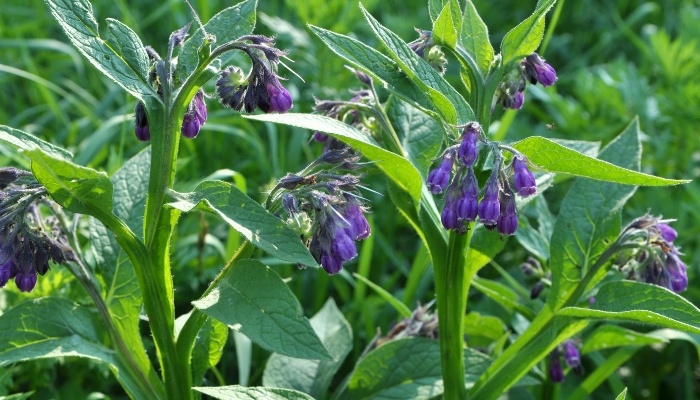
Comfrey is a member of the borage family. Various species of this plant have been used for a long time in traditional medicine.
However, consuming the plant is considered unsafe by some. Its blooms attract pollinators, especially bees that benefit the fig trees and neighboring plants.
Comfrey is an excellent addition to compost heaps, and dried leaves can be used as mulch to add nutrients back to the soil
- Key benefits: Attracts pollinators
- Light requirements: Full sun, partial shade
- Average size: 12–36 inches tall, 9–30 inches wide
- Bloom time: Spring
2. Marigolds

Native to Mexico, marigolds have many species. They grow in just about any soil. Their blooms are ornamental, but some species have pungent foliage that repels many garden pests as well as harmful nematodes.
- Key benefits: Repels nematodes and common pests
- Light requirements: Full sun
- Average size: 4–48 inches tall, 6–24 inches wide
- Bloom time: Summer
3. Mint
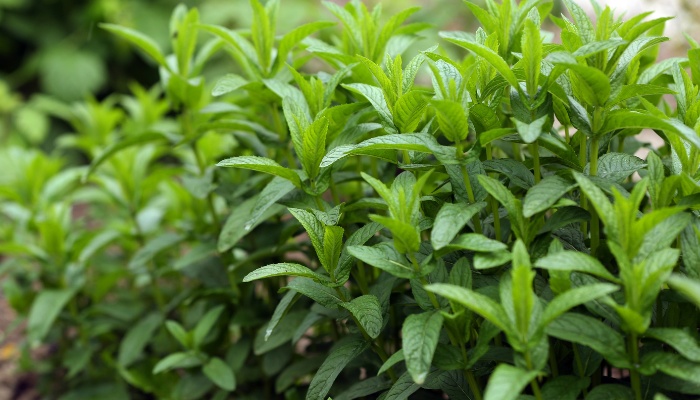
The aromatic perennial herb spreads quickly and covers a large area. Many mint species are key ingredients in drinks, recipes, and toothpaste. It’s also a key component in traditional medicine and relieves indigestion.
- Key benefits: Medicinal uses, deters pests
- Light requirements: Full sun, partial shade
- Average size: 12–18 inches tall, 18–24 inches wide
- Bloom time: Summer
4. Strawberries
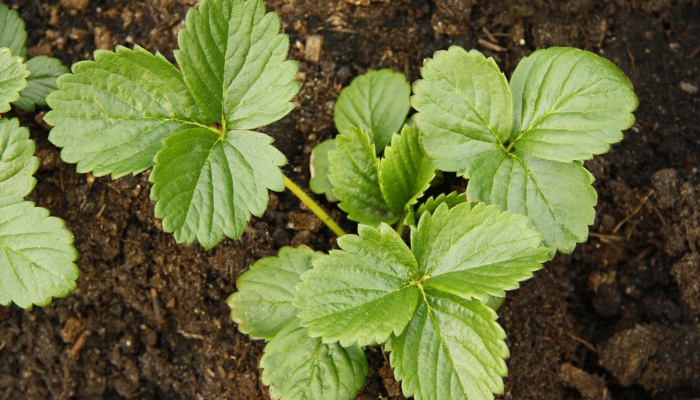
Strawberries are consumed fresh and have many culinary uses. The flowers attract bees that help pollinate other flowers in the garden.
- Key benefits: Culinary use, flowers attract pollinators
- Light requirements: Full sun
- Average size: 4–12 inches tall, 6–24 inches wide
- Bloom time: Late spring, early summer
5. Rue
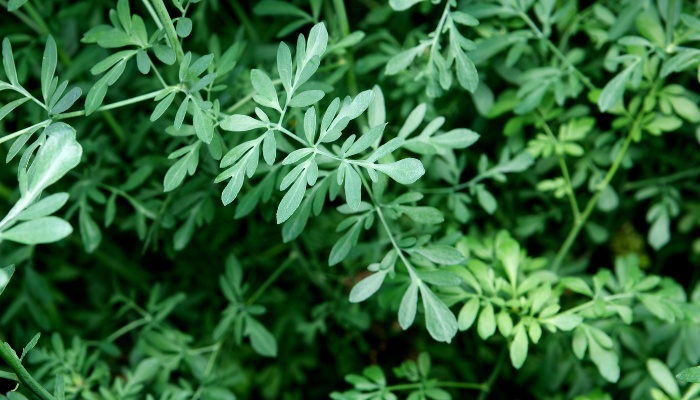
Both an ornamental plant and a herb, common rue is native to the Balkans. However, it is hardy to hot and dry climates the world over.
The main benefit of rue is to repel pests and attract pollinators like butterflies. It also attracts parasitic wasps that feed on bugs and pests in the garden.
- Key benefits: Repels pests, attracts butterflies and parasitic wasps
- Light requirements: Full sun
- Average size: 2–3 feet tall and wide
- Bloom time: Summer
6. Nasturtiums
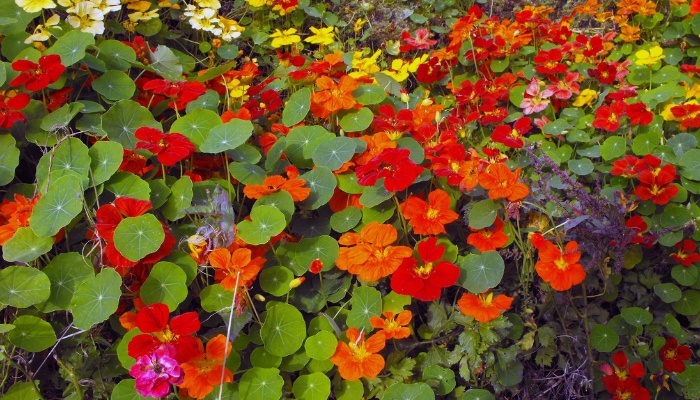
This is a popular ornamental plant best known for its edible leaves, lush foliage, and bright blooms. It’s also easy to grow.
Nasturtiums also serve a practical purpose in the garden as they attract aphids and other pests away from vegetables and fruits nearby.
- Key benefits: Helps keep aphids off other plants
- Light requirements: Full sun
- Average size: 1–10 feet tall, 1–3 feet wide
- Bloom time: Spring, summer, fall
7. Bottlebrush
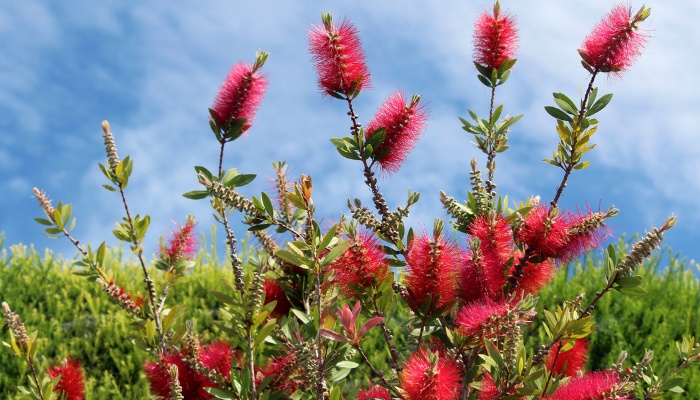
Named after its cylindrical flowers that look like brushes, this plant thrives in moist soils. It’s mostly an ornamental plant, and some species are tolerant to drought.
- Key benefits: An ornamental plant
- Light requirements: Full sun
- Average size: 15–20 feet tall, 15–20 feet wide
- Bloom time: Spring, summer
8. Sweet Williams

A herbaceous biennial, this ornamental plant is native to Europe and parts of Asia. Its multicolored and highly decorative blooms have made it a popular garden favorite since the late 16th century. It attracts both birds and bees.
- Key benefits: Attracts birds and bees
- Light requirements: Full sun, partial shade
- Average size: 1–2 feet tall, 0.5–1 foot wide
- Bloom time: Spring, Summer
9. Daisies
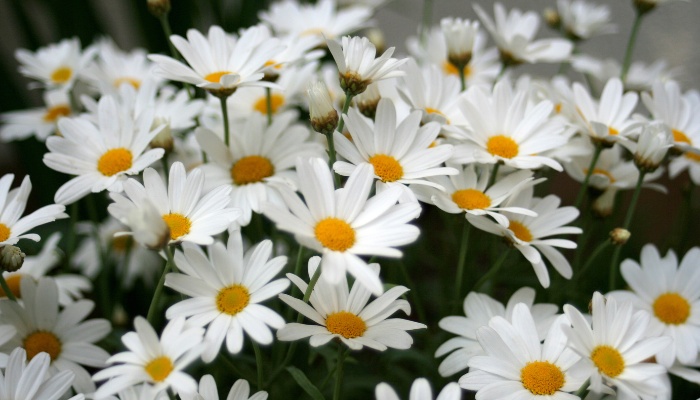
Daisies have been a staple of English gardens for centuries. They are native to Europe, and the flowers have the ability to follow the sun as it races across the sky.
The young leaves are edible and add a good flavor to salads. You can make tea from the leaves to serve as a vitamin supplement.
- Key benefits: Ornamental blooms, edible flowers, and vitamin supplements
- Light requirements: Full sun to partial shade
- Average size: 3–6 inches tall, 3–9 inches wide
- Bloom time: Spring to summer
10. Bee Balm
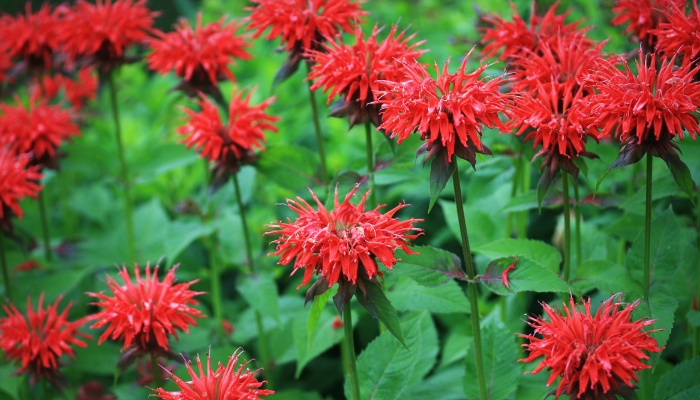
Native to North America, the ornamental plant has beautiful blooms that attract butterflies, hummingbirds, and bees. The flowers vary between red, pink, white, and lavender. It also has fragrant foliage.
- Key benefits: Fragrant foliage and attracts pollinators
- Light requirements: Full sun to partial shade
- Average size: 10–48 inches tall, 10–36 inches wide
- Bloom time: Summer
11. Purple Coneflowers
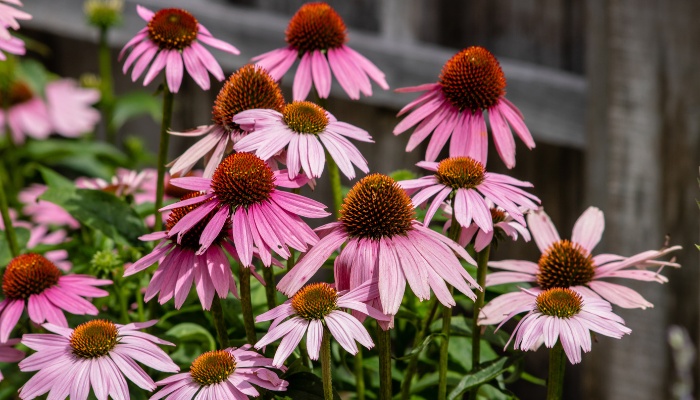
Also native to North America, purple coneflowers attract pollinators and are deer resistant. Birds feed on the seeds as well. Additionally, it has medicinal properties.
- Key benefits: Attracts pollinators and birds, is deer resistant, has medicinal properties
- Light requirements: Full sun, partial shade
- Average size: 2–5 feet tall, 1–2 feet wide
- Bloom time: Summer
12. Black-Eyed Susans
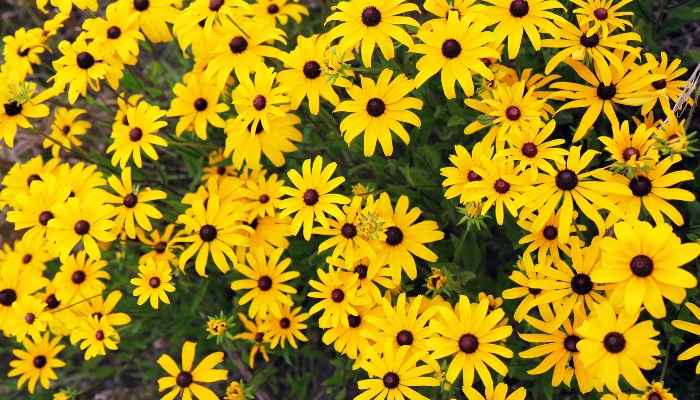
A member of the aster family, black-eyed Susan has blooms similar to daisies but with a dark center. It grows well in Zones 3 to 9. Bees and butterflies feed on the nectar in the flowers.
- Key benefits: Attracts bees and butterflies
- Light requirements: Full sun
- Average size: 2-3 feet tall, 1-2 feet wide
- Bloom time: Summer, fall
13. Lupines
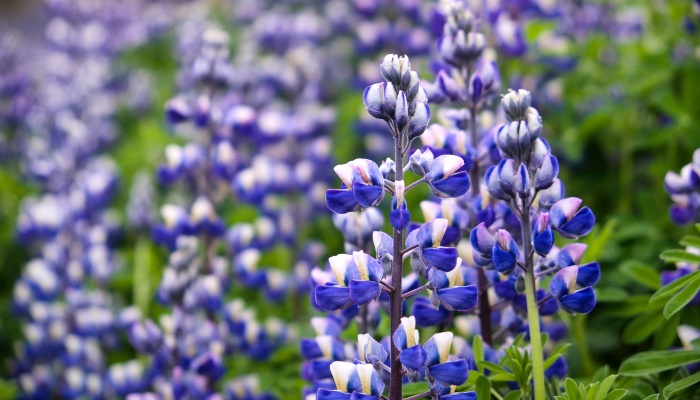
Native to North America, these ornamental plants are popular in many gardens. They have spike-like purple flowers and silvery gray leaves with fine hairs. Their seeds are edible.
- Key benefits: Attracts pollinators, may increase nitrogen in soil
- Light requirements: Full sun
- Average size: 3–4 feet tall, 1–1.5 feet wide
- Bloom time: Spring, summer
14. Alliums
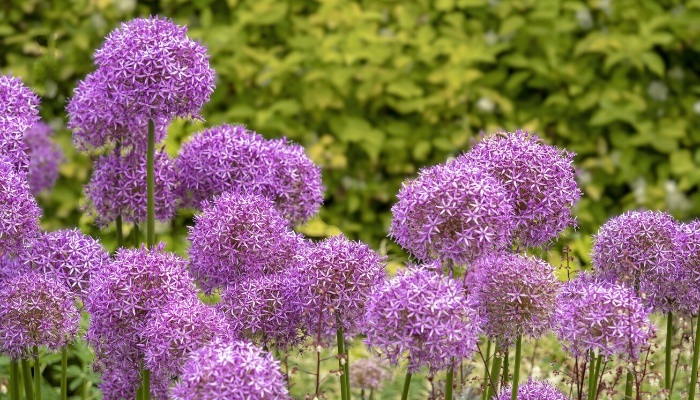
Alliums encompass a huge variety of plants including garlic, onions, leeks, shallots, and ornamental species. The globular clusters of star-shaped flowers are highly ornamental and add color to every setting. The leaves smell like onions and repel pests.
- Key benefits: Ornamental flowers, repel pests
- Light requirements: Full sun
- Average size: 1-4 feet tall, 3-10 inches wide
- Bloom time: Spring, fall
15. Lantana
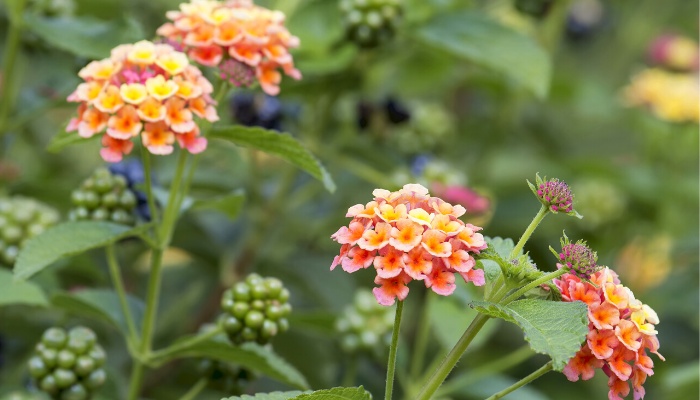
The herbaceous species of lantana are better fig tree companions than the shrub species. They have aromatic flowers that vary widely in color. Extracts from the seeds repel aphids.
- Key benefits: Repel aphids
- Light requirements: Full sun
- Average size: 6 feet high and wide
- Bloom time: Year-round in frost-free climates
16. Petunias
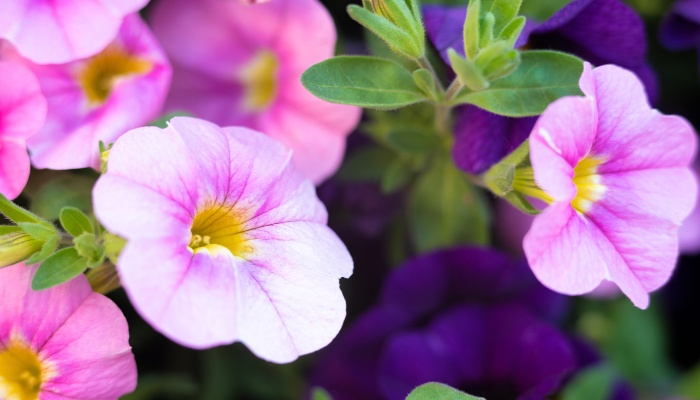
Petunias are grown as perennials in Zones 9 to 11 and as annuals everywhere else. They have bright flowers that bloom from the spring until the first frost. Some petunia species have fragrant blooms.
- Key benefits: Ornamental plants
- Light requirements: Full sun
- Average size: 6–24 inches tall, 6–36 inches wide
- Bloom time: Spring, summer, fall
17. Sage

Sage is a perennial herb with culinary uses. It has gray-green leaves and flowers in various colors.
It does well as a border plant to veggie patches where its aromatic leaves repel pests. The herb has medicinal properties and is packed with antioxidants.
- Key benefits: Medicinal properties, pest repellent
- Light requirements: Full sun
- Average size: 2–2.5 feet tall, 2–3 feet wide
- Bloom time: Summer
18. Marjoram
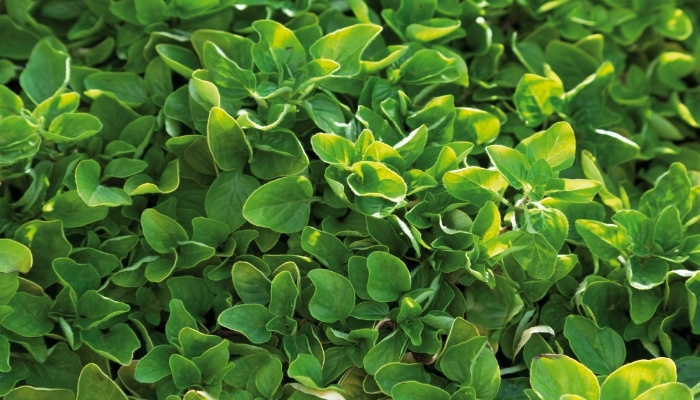
Another herb that does well as an edging plant, marjoram is a perennial plant with citrus flavors.
It has a long history as a medicinal herb. Its antibacterial properties make it ideal as a mouthwash, and marjoram tea can be used to treat arthritis and muscle aches.
- Key benefits: Treatment against arthritis and halitosis, attracts beneficial insects
- Light requirements: Full sun
- Average size: 1–2 feet tall, 1–2 feet wide
- Bloom time: Summer
19. Sunflowers
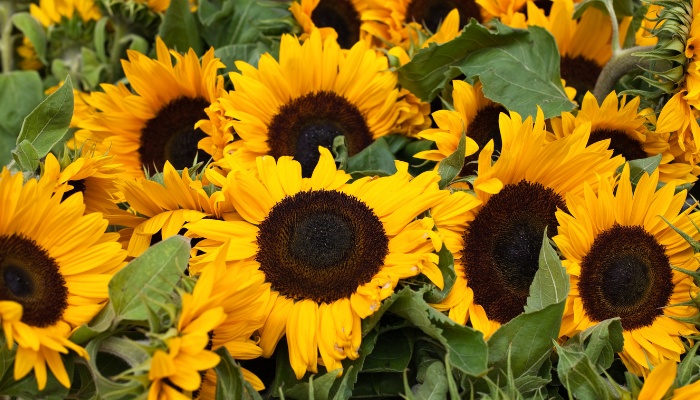
The cheerful flowers of sunflowers make this tall plant a great addition to every garden. They attract pollinators of different types.
The plant is tolerant to hot climates and resists pests. The seeds are edible and packed with nutrients and antioxidants.
- Key benefits: Nutritious seeds, attracts pollinators
- Light requirements: Full sun
- Average size: 3–10 feet tall, 1.5–3 feet wide
- Bloom time: Summer, fall
20. Stinging Nettle
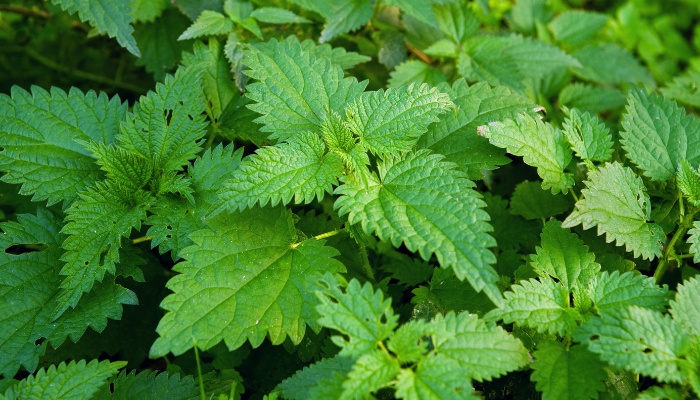
Named after the hollow stinging hairs on its stems and leaves, stinging nettle is a herbaceous perennial that grows all over the world.
It has been used as a source of food, to make teas, and in traditional medicines. When cooked, the leaves of stinging nettle taste like spinach.
- Key benefits: Food source, traditional medicine, attracts beneficial insects, deters pests
- Light requirements: Full sun to partial shade
- Average size: 3–7 feet tall, 1–3 feet wide
- Bloom time: Summer
21. Lemon Balm
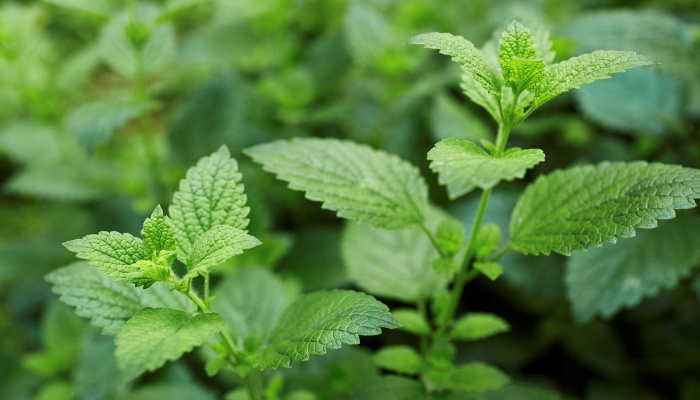
A member of the mint family, lemon balm is a herbaceous perennial. It has white flowers that attract pollinators with their sweet nectar. The aromatic leaves make teas with good medicinal properties.
- Key benefits: Attracts pollinators and medicinal values
- Light requirements: Full sun to partial shade
- Average size: 1.5–2 feet tall, 1.5–3 feet wide
- Bloom time: Summer
22. Queen Anne’s Lace
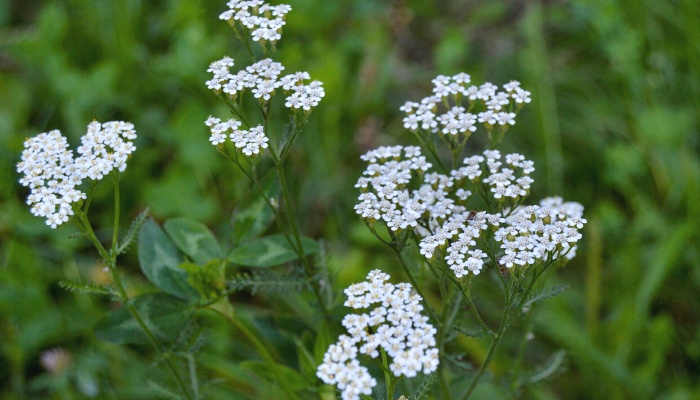
Many plants have this common name in different parts of the world. In North America, the name refers to wild carrots. It’s an ornamental plant with hairy stems. The young leaves and flowers are edible.
- Key benefits: Edible flowers and leaves, attracts pollinators
- Light requirements: Full sun to partial shade
- Average size: 2–3 feet tall, 1 foot wide
- Bloom time: Summer, fall
23. Meadow Cranesbill
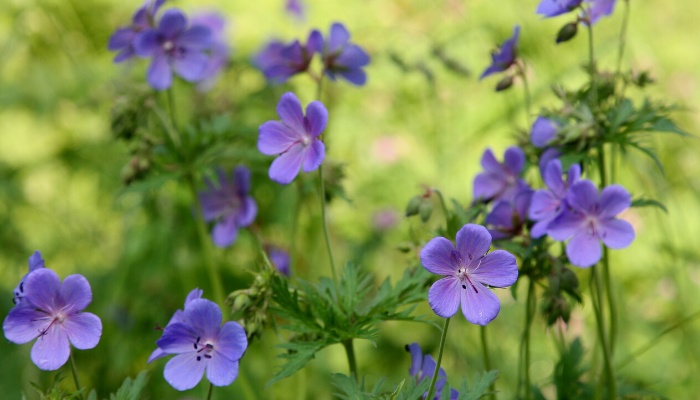
Native to Europe and Asia, this herbaceous perennial has ornamental saucer-like flowers. The blooms can either be purple or red-purple.
- Key benefits: Ornamental plant great for naturalization
- Light requirements: Full sun to partial shade
- Average size: 6–36 inches tall, 1–3 feet wide
- Bloom time: Spring, summer, fall
24. Rosemary
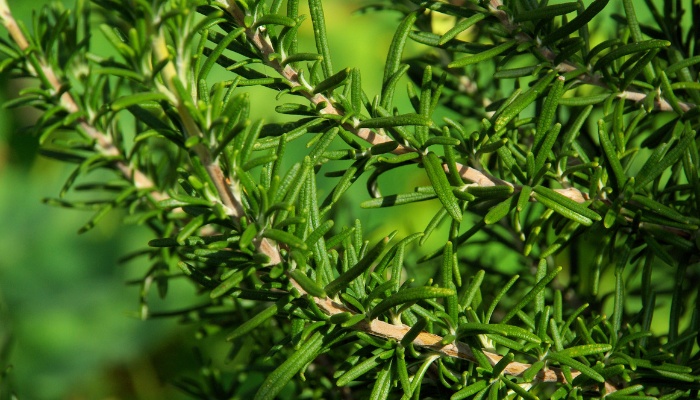
The herb is both ornamental and beneficial. Its needle-like leaves are light green, and the flowers are pink, blue, purple, or white.
Rosemary is an evergreen herb with a strong fragrance that keeps pests away. It has many culinary and medicinal uses.
- Key benefits: Repels pests, has medicinal properties and culinary uses
- Light requirements: Full sun
- Average size: 2–6 feet tall, 2–4 feet wide
- Bloom time: Spring, summer
25. Chamomile
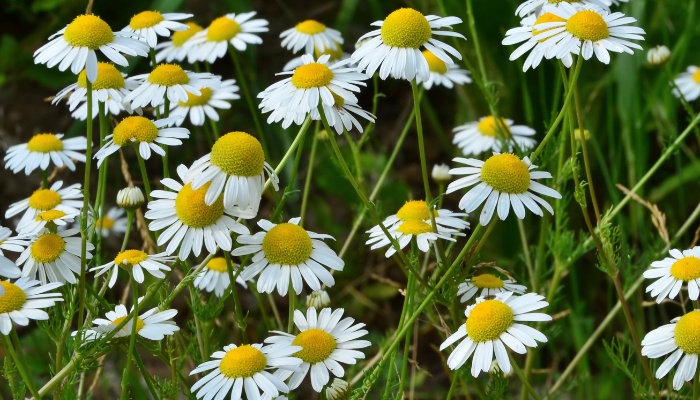
Chamomile is an ornamental plant with daisy-like flowers. It’s widely used in the cosmetics industry, beverages, and mouthwash.
- Key benefits: Attracts beneficial insects
- Light requirements: Full sun
- Average size: 8–24 inches tall, 8–12 inches wide
- Bloom time: Summer
Closing Thoughts
Fig trees do well with a wide variety of companion plants. Herbs are ideal to pair with fig trees since they repel pests and attract pollinators. However, other flowering plants, such as sunflowers and petunias, make great companions for fig trees.
Eager for more helpful fig tree tips? You’ll enjoy reading these articles next:
- Planting Fig Tree Near House – Key Considerations & Tips
- Can You Grow a Fig Tree From a Cutting? Two Easy Methods
